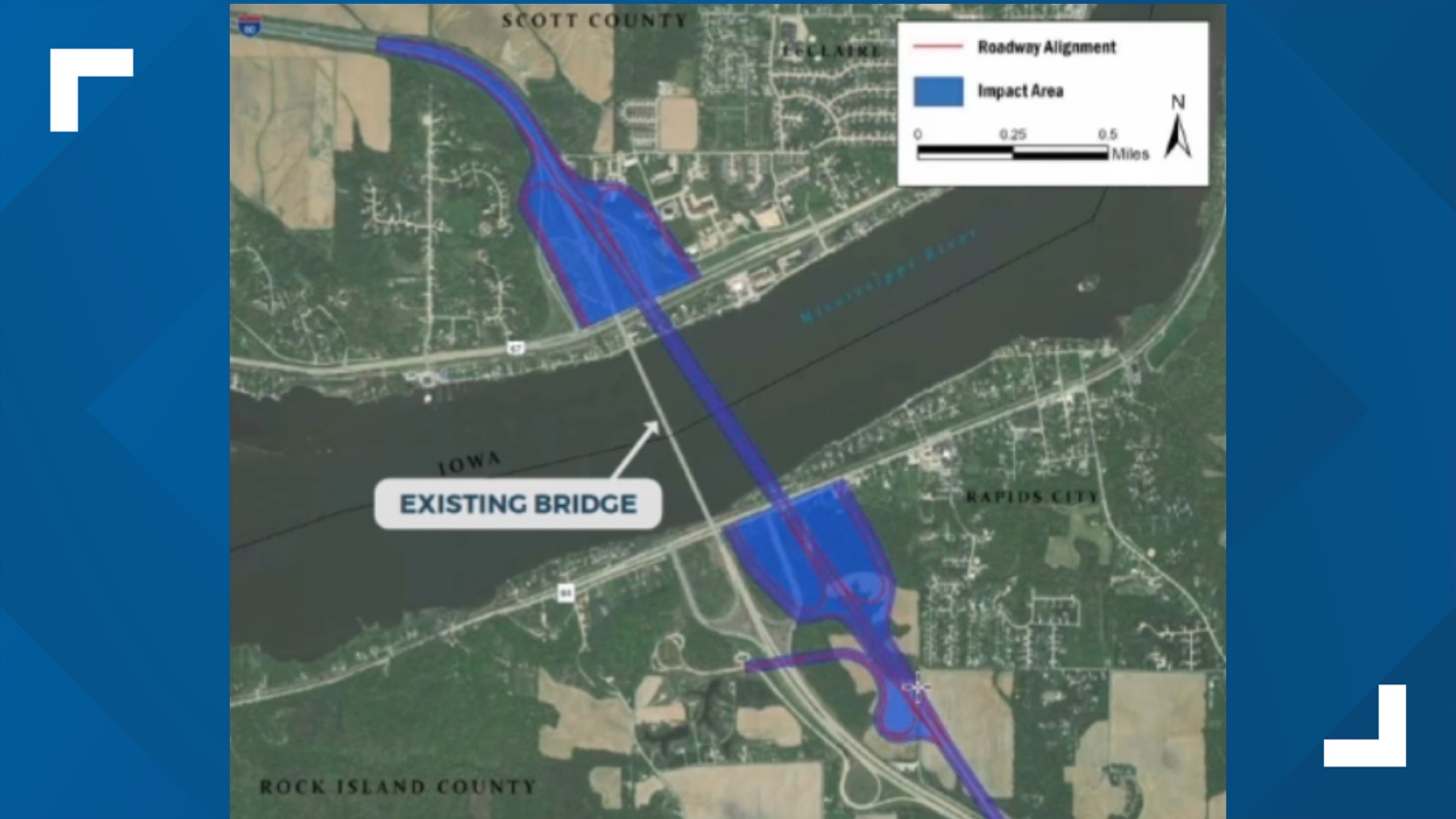LE CLAIRE, Iowa — After a year of speculation, leaders on the I-80 bridge project have revealed seven potential locations for the new crossing and say a proposed bison bridge will not factor into the decision.
The Illinois Department of Transportation says while it is aware of the interest around the potential wildlife crossing, its main design criteria is tied to the project's purpose and need, as well as an evaluation of the resulting environmental impacts as is required by the National Environmental Policy Act.
For now, the department is focused on how many wetlands, streams and grasslands will be effected by the project, as well as any residential and commercial relocations and potential impacts to historic resources in the region.
"The use of the existing structure for a bison park is not an existing environmental resource and couldn't be used to mitigate any impacts to environmental resources that currently exists in the project area," said Tony Pakeltis, a representative of Parsons Corporation and a member of the I-80 bridge panel that hosted a public meeting on Wednesday afternoon. Parsons is an engineering firm hired by IDOT to examine where the new bridge could be built.
In the spring of 2021, the Bison Bridge Foundation was founded and launched by local environmental activist and author Chad Pregracke. The group proposed repurposing the current I-80 bridge into the world's longest wildlife crossing, with one half dedicated to bison and the other to pedestrians. All of it, says Pregracke, would be done without taxpayer money.
Since then, the foundation has received a $4 million donation and nearly 40,000 petition signatures in support of the project. On April 5 Illinois lawmakers passed a bill asking Gov. J.B. Pritzker and IDOT to include the bison bridge in I-80's plans.
If the chosen location for the new I-80 crossing involves tearing down the current structure, the bison bridge plans are, essentially, dead in the water according to Pregracke.
However, not all hope is lost for the group.
The current bridge is more than half a century old and struggles from narrow lanes, cramped shoulders and aging infrastructure.
"The Mississippi River Bridge doesn't meet a lot of current roadway and bridge design standards and the lack of shoulders create an issue if there's any crashes or stalled vehicles on the bridge where these incidents can easily shut down one or both lanes of travel," Pakeltis said. "Additionally, we found that a lot of the crash trends in high-crash locations were tied to areas where there were existing bridge and roadway design deficiencies."
It's what led IDOT to seven options for a new bridge. All of them include four 12-foot traffic lanes, two 12-foot auxiliary lanes, 12-foot outside shoulders and 6-foot inside shoulders. Each alternative would also require the U.S. Highway 67 and Illinois Highway 84 interchanges to be reconstructed to fit current design standards.

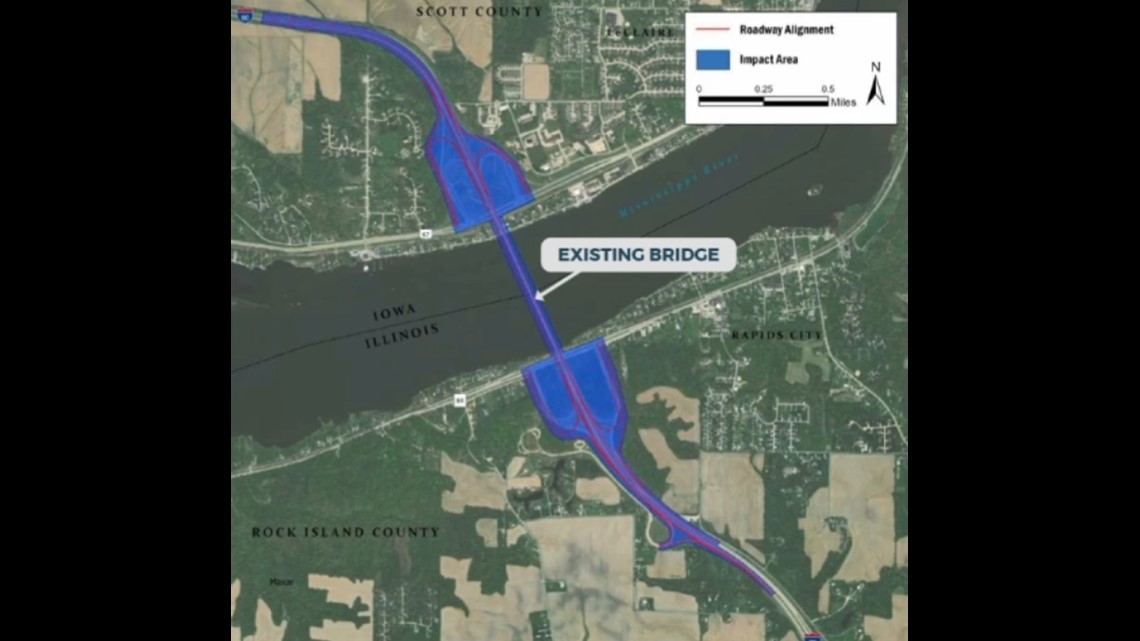
Option 1: In this scenario, IDOT would build the new bridge exactly where the current one stands. It would require the existing structure to be destroyed before new construction could begin and would mean traffic detours to an alternative crossing for at least four years.

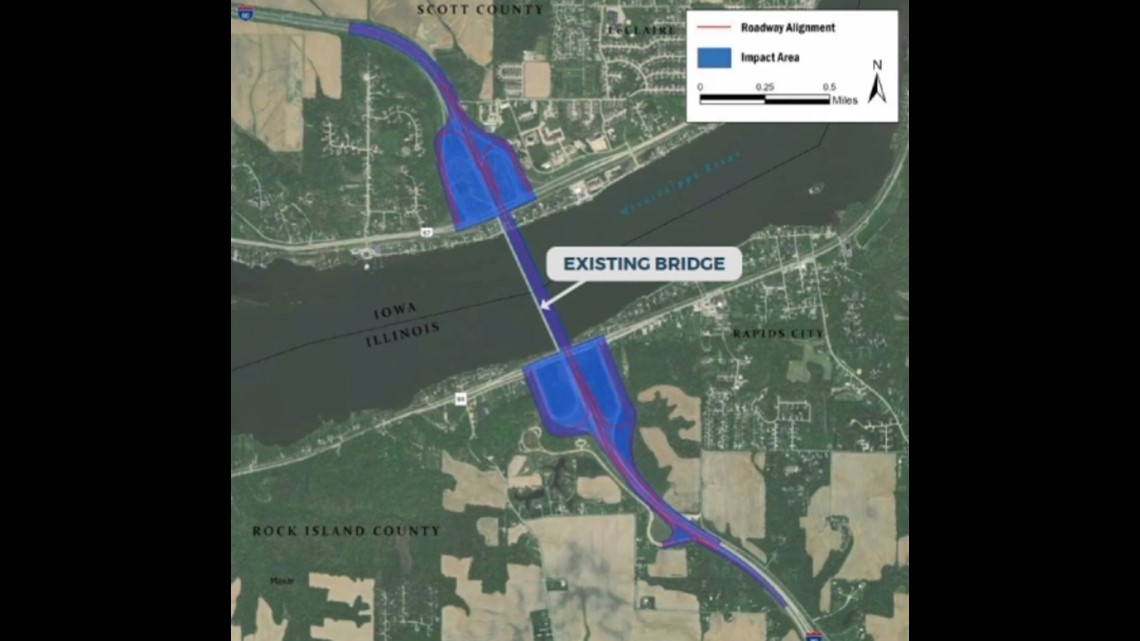
Option 2: This option would see the new bridge placed 50-feet east of the existing structure. It's unclear if the current bridge would be torn down in this scenario.

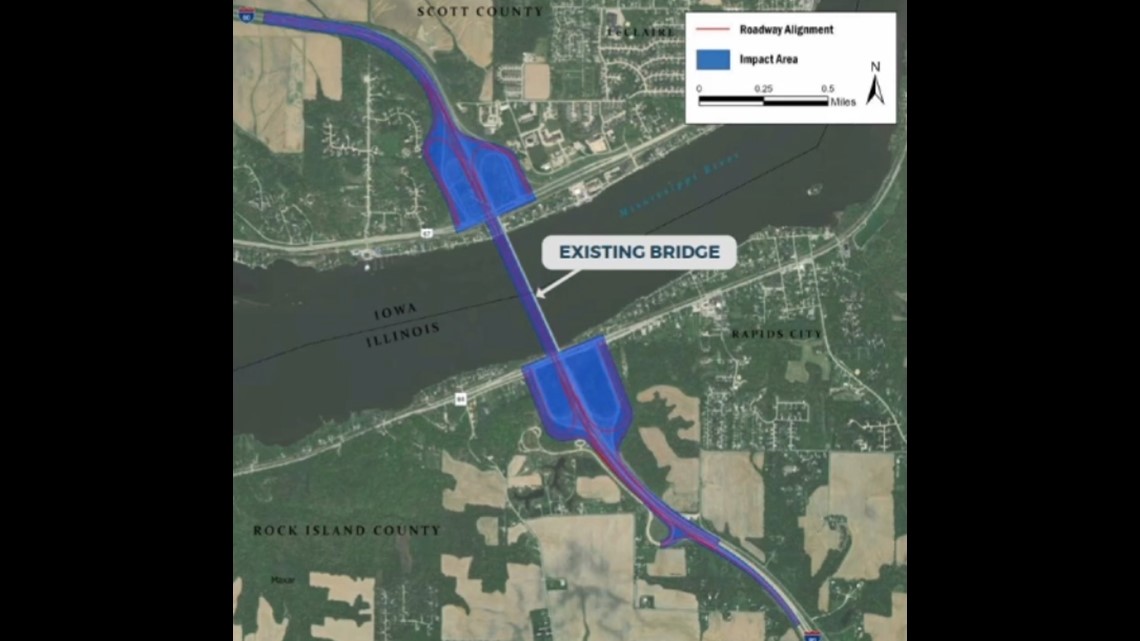
Option 3: This is a mirror image of option two, with the new bridge being built 50-feet to the west.

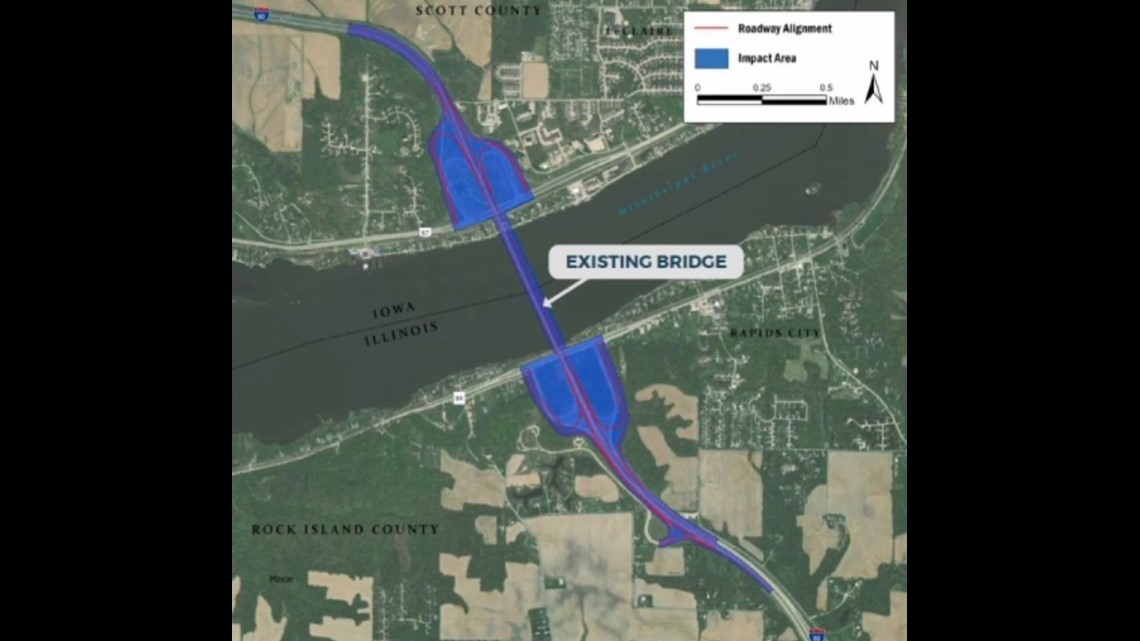
Option 4: The next two alternatives are hybrids of options two and three. Number four would build a companion bridge just 20-feet to the east of the existing structure. During construction, traffic would continue to utilize the current I-80 crossing and would not need to find an alternative route. After phase one is complete, traffic would be switched to the finished companion bridge while the existing I-80 bridge is torn down and a replacement is built instead. The end result would be two side-by-side bridges.

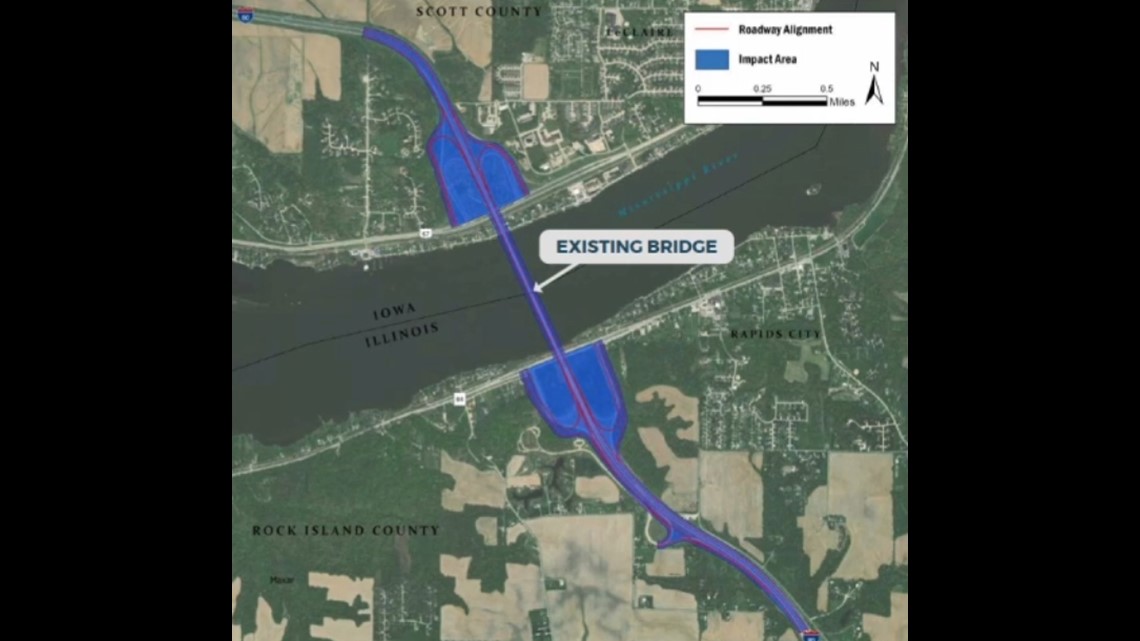
Option 5: This is a mirror image of option four. The only difference is the companion bridge would be built 20-feet to the east. In this scenario, the current bridge would be destroyed.

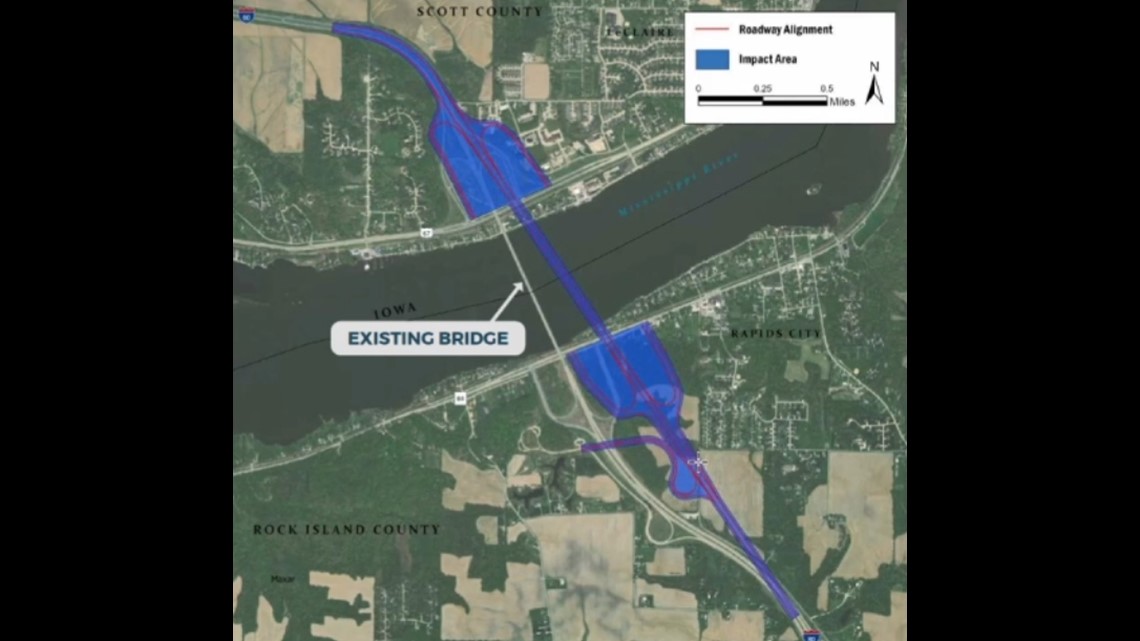
Option 6: If this option is chosen, the new I-80 crossing would be built approximately 600-feet east of the current bridge. It would impact some agricultural and developed land as well as require new access to the Mississippi Rapids Rest Area but it could, in theory, leave the old bridge intact.

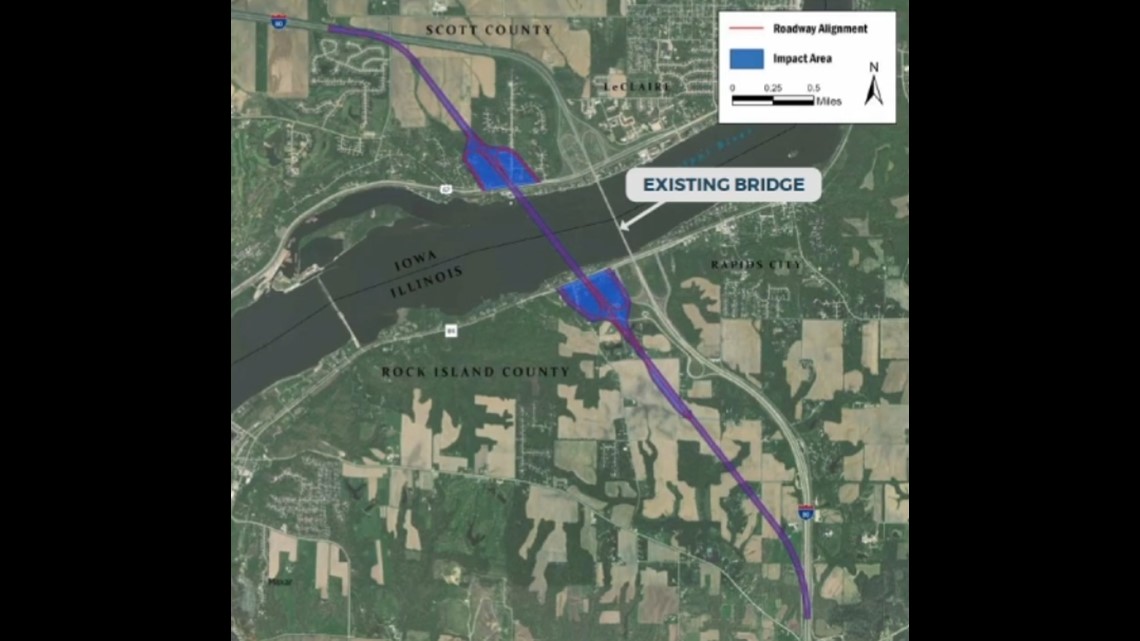
Option 7: The final alternative would shift the I-80 bridge roughly 2,100 feet to the west, impacting farms and residents as well as the Mississippi Rapids Rest Area. This option would, theoretically, leave the current bridge in the best condition for a wildlife crossing.
IDOT is also examining reconstruction of the US-67 and IL-84 interchanges. The department says it wants to expand the clover-shaped on and off ramps to create more gradual curves.
The team from Parsons determined the severity of several environmental impacts from each design.
It was found that relocations for each proposal were relatively low. The first five alternative designs had five or fewer relocations. However, Option seven was the outlier with an estimated 53 relocations.
On the other hand, at least four and as many as nine streams could be impacted by the construction. Option three would pack the largest punch, effecting five streams and nearly 5,000 linear feet of water. None of the designs appear to effect any wetlands.
And when it came to 'prime farmland soils' the corporation reported most options would not impact agricultural land. But the final two proposals would each effect an estimated 91 and 128 acres, respectively.

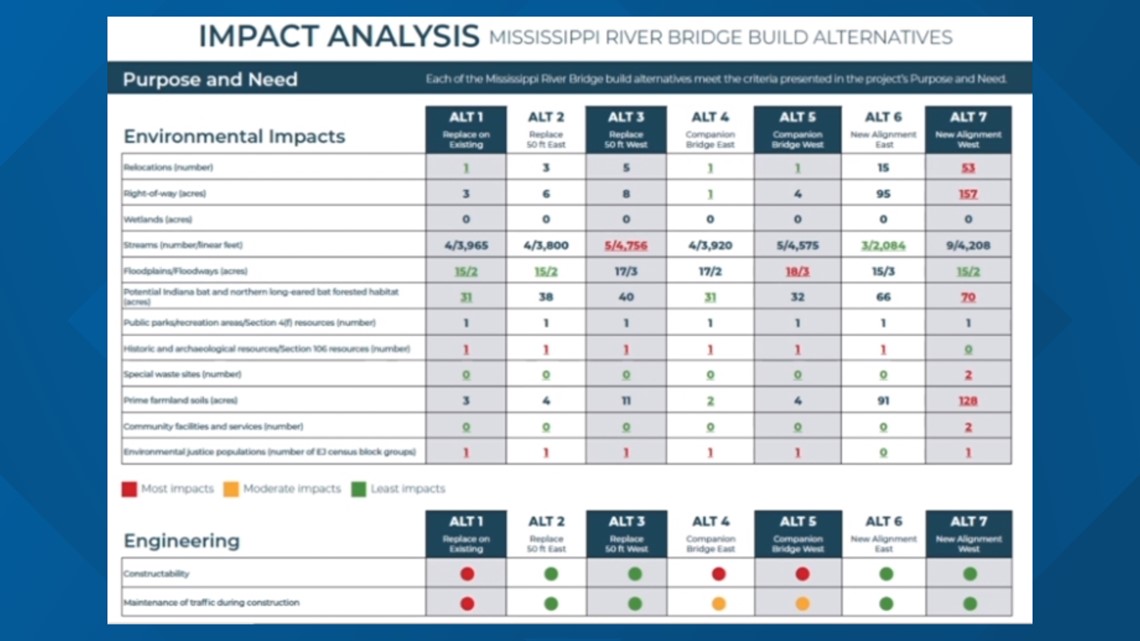
"We look at the full impact of any alternative on the environment. Some folks might think, okay, environment means plants and turtles and mussels," said IDOT's Becky Marruffo. "Those things are all important. But also important is the impact on people."
The last hour of Wednesday night's meeting was dedicated to public questions, answered by a panel of I-80 bridge project leaders. At this time the cost of each design is not being taken into consideration as per NEPA law requirements, according to the panel.
"During the next stage of development of these alternatives we will start to estimate construction costs," Pakeltis said.
At this time there are no plans to include a bicycle path on the I-80 bridge.
"Typically, we don't see a lot of bicycle facilities along an interstate," said Mike Kuehn with IDOT. "But again, we need public input on that."
The panel also revealed each design was trying to take wider navigation spans in-between support beams into account. However, it's not a driving factor in the design. A coordinated effort with the U.S. Army Corp of Engineers on issues such as that is also ongoing, said project leaders.
And when it comes to the I-80 crossing, its project leaders said much could be learned from the decades-long effort to built the new I-74 bridge. In fact, several members of the I-80 bridge project also worked on the new I-74 crossing.
"One of the things that we did as a team for that project was evaluate creative ways to not only save money, but... expedite construction," Marruffo said.
Looking forward, project leaders expect to present a preferred design proposal to the public sometime in the first half of 2023. After that, a final report and recommendation of the project's preferred location option is expected around the end of 2023.
But for now, the project wants public input on all of the offered locations and designs. Between now and May 25 you can submit your opinions, comments and questions here.
There will be a third public meeting within the next few months.

